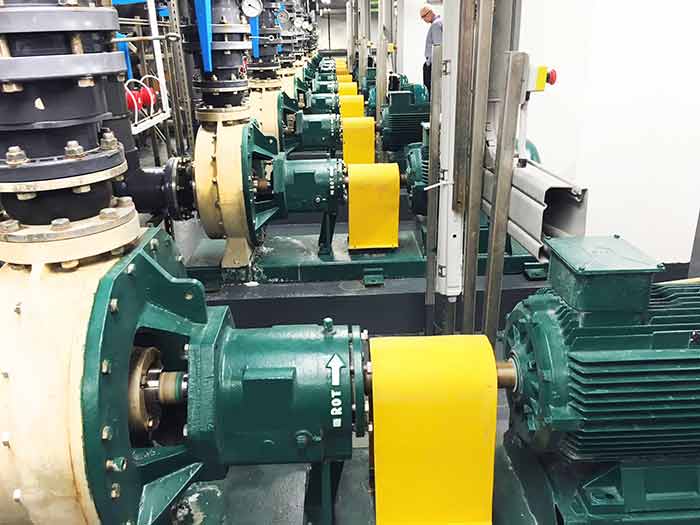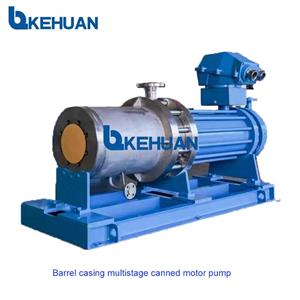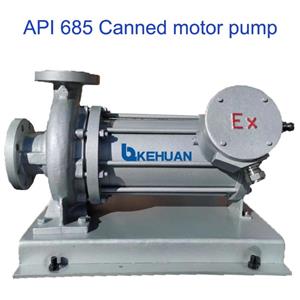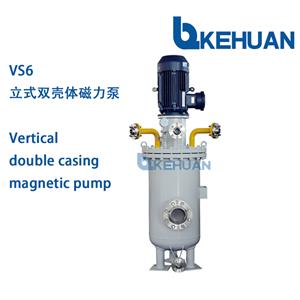Selecting a Pump for Caustic & Corrosive Conditions
When picking the right pump for chemical applications, there are many factors to consider. True, for many mid-to-large-scale industrial fluid transfer needs, a good-quality conventional single-stage centrifugal pump with a mechanical seal at the drive-shaft opening is perfectly adequate. Probably two-thirds or more of all industrial pumps in use today are of this type. How often the seals and inside components need to be replaced depends on the nature of the fluid—its chemical composition, corrosiveness, viscosity and temperature among other factors. The good news is that, due to ANSI standards, pumps of this kind are interchangeable, which means they can be replaced as needed—at a cost.
Typically, the first point of failure in a conventional chemical pump is the mechanical seal. During normal operation, the life of a mechanical seal is two to three years. However, depending on operating temperature, fluid properties and amount of solids, a mechanical seal can fail within three to six months.
If the pumped fluid is hazardous to personnel, equipment or the environment, the fluid leakage from failure could be catastrophic. This fluid leakage can be curtailed by using an inside mechanical seal with external flushing. The flushing and draining system can be costly and the operator must control and/or contain any drained fluid.

Image 1. Fiberglass reinforced polymer pumps (Image courtesy of CECO Environmental Fluid Handling Solutions)
Mag-Drive Pumps
When the cost of flushing, drainage, replacement seals and continuous maintenance reach a certain point, magnetically driven (mag-drive) pumps become a cost-effective—and environmentally friendly—option (OSHA now requires them for some classes of fluid).
Since the drive for a magnetic pump does not require a shaft that enters the pressure-retaining parts of the pump, there is no need for a seal. Rare earth magnets rotated by an exterior driver/motor pass the magnetic force through a container wall, rotating corresponding magnets on the inside to power the impellers.
Mag-drive pumps solve the seal leakage problem by eliminating the seals. They also contribute to preserving the pump parts.
Many mag-drive pumps are made of metal—high-carbon steel—and therefore are vulnerable to highly reactive compounds at both extremes of the pH scale.
Fiberglass Reinforced Polymers
One widely used solution is coating the exposed interior parts of the pump with a polytetrafluoroethylene (PTFE)-type of material, which is nonreactive and highly corrosion resistant. But PTFEs can lack structural strength, which means that friction and flow stresses, especially with more viscous fluids, will sooner or later cause cracking or scratching, thus exposing metallic parts to corrosion and damage.
More costly than conventional sealed pumps or PTFE-coated magnetic pumps, but without their vulnerabilities, are nonmetallic pumps made of fiberglass reinforced polymers (FRP). Internal wetted parts, including casings, impellers and inner magnet rings, are created using a labor-intensive process, resin transfer molding (RTM).
FRP components manufactured using RTM are both durable and nonreactive. With a longer-term outlook, facility managers invest in a more costly FRP mag-drive pump to replace a lower cost pump and the resulting extended life more than covers the initial price difference.
Conclusion
When evaluating the cost of replacing metallic pumps and seals, it is important to include the cost of the downtime necessary to repair or replace the equipment. FRP pumps become cost-effective when transferring fluids such as sulfuric acid.




